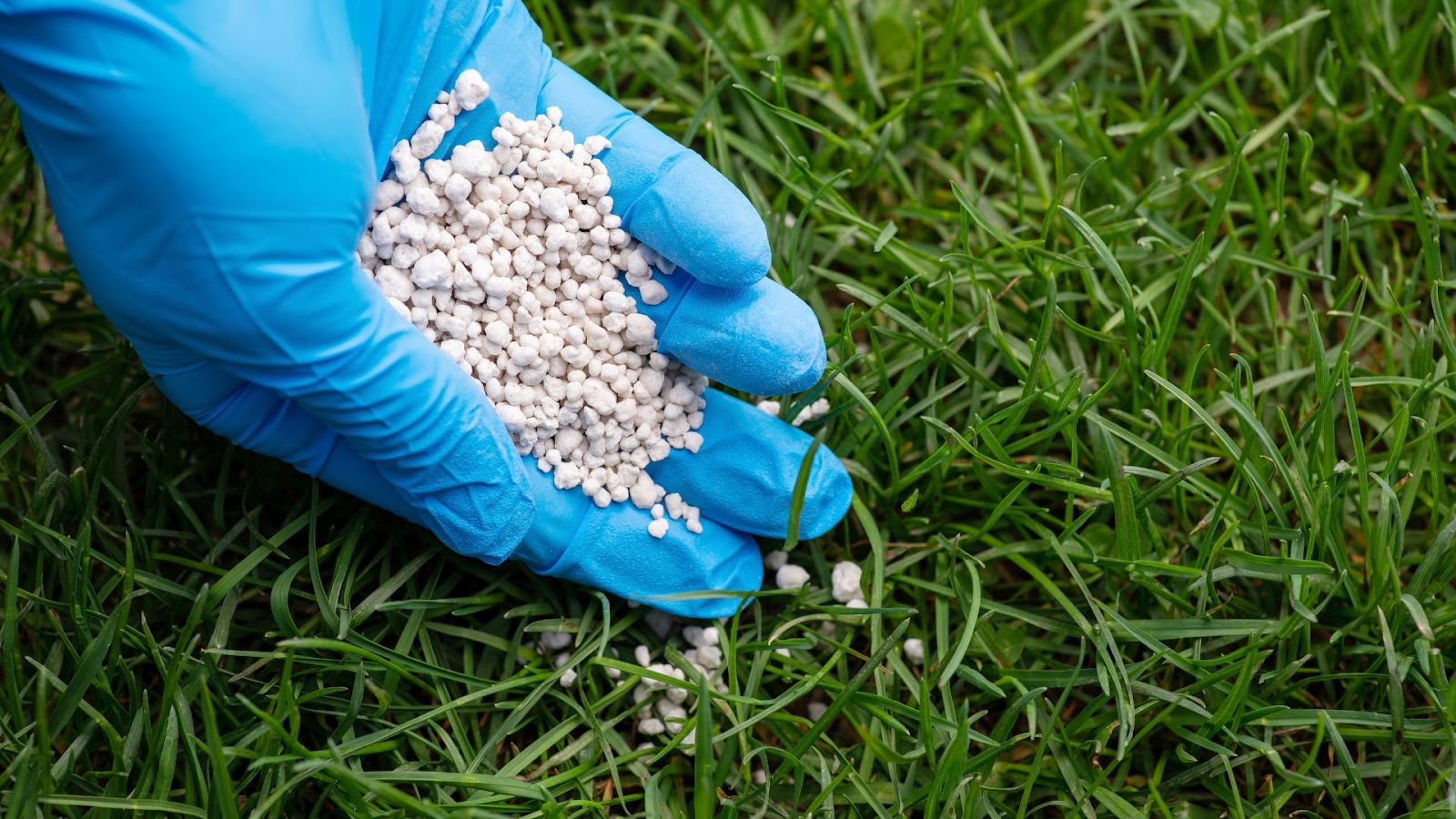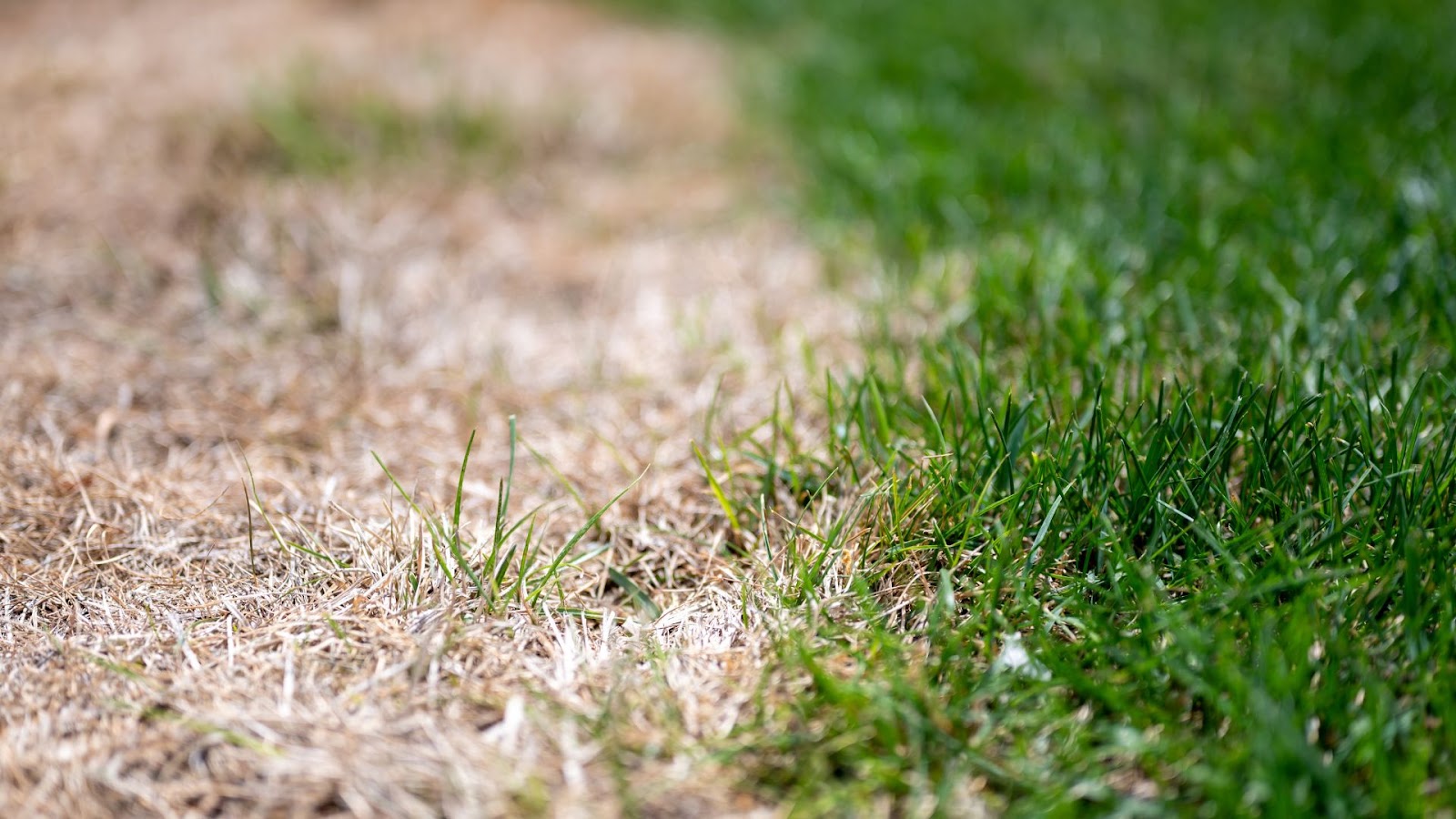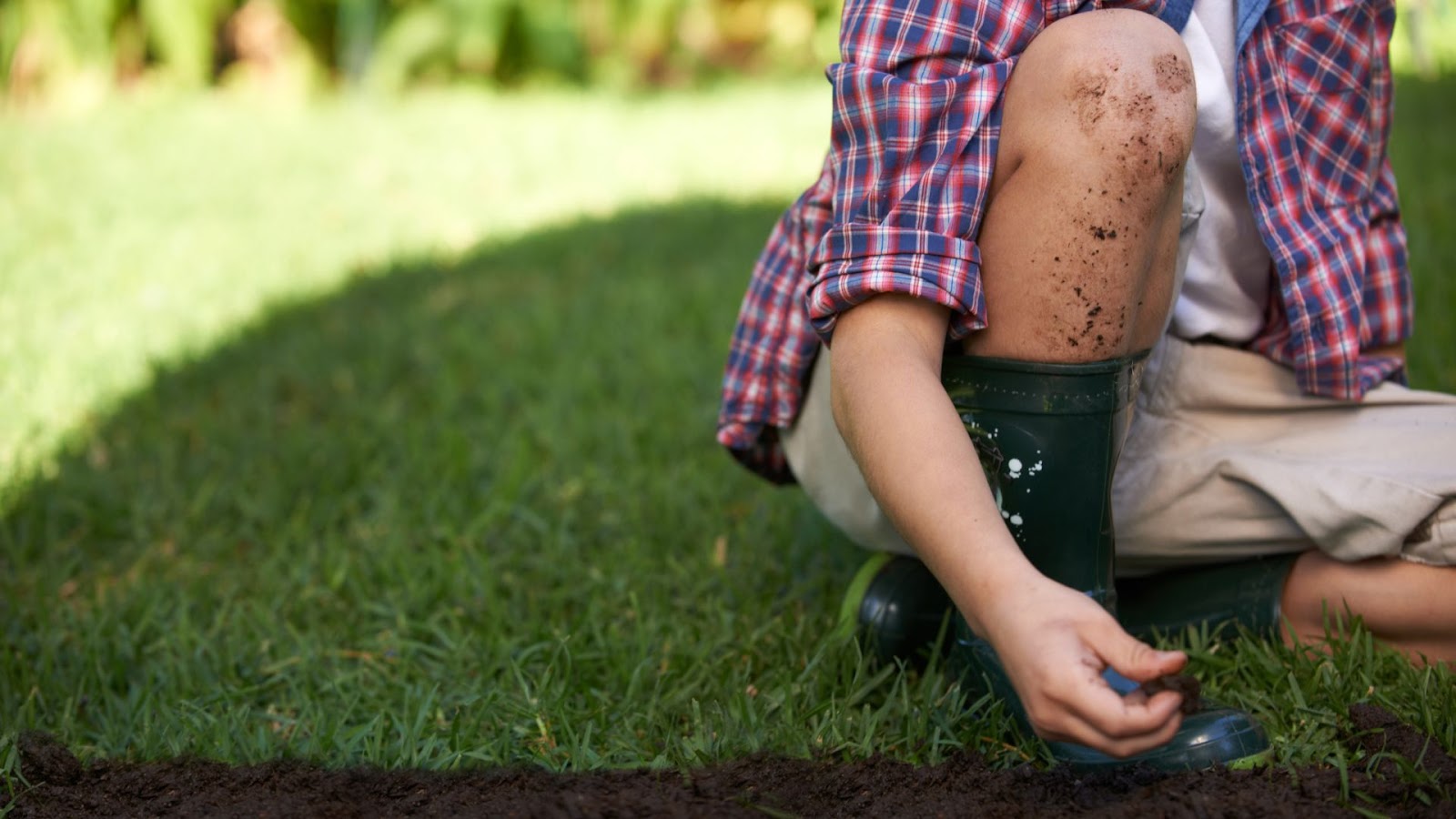A lush, green lawn can be easily sabotaged by fertilizer burn. This standard lawn care issue is caused by over-application or improper use of fertilizer, resulting in salt buildup in the soil.
It is then characterized by unsightly yellow streaks, scorched grass, dead patches, and potentially costly repairs.
Many homeowners like you unknowingly damage their grass while trying to nourish it with fertilizer. In this practical guide, you’ll learn what fertilizer burn is, how to identify the signs early, and, most importantly, how to avoid it altogether.

Fertilizer burn occurs when excessive fertilizer is applied, resulting in salt accumulation in the soil. This draws moisture away from the grass roots, leading to dehydration and damage.
According to Purdue University, most mineral fertilizers are based on salts. Thus, when spilled or heavily concentrated in one area, the salt draws water out of the grass cells.
This causes the plant tissue to dry out and die, resulting in visible signs of burn, such as yellow or brown patches. This leads to desiccation, where grass essentially dries out from the inside.
Fertilizer burn also has environmental consequences. Excess fertilizer running off into nearby waterways can contribute to nutrient pollution. This often leads to harmful algal blooms that disrupt aquatic ecosystems and reduce water quality.
While the impact on both your lawn and the environment can be serious, the good news is that recovery may still be possible.
Recovery from overfertilization is often possible if you act quickly. The extent and scope of regrowth depend on the severity of the damage and how soon you take corrective steps.
Grass that shows signs of yellowing or wilting may still have intact roots, which means it can recover. On the other hand, dry, brown patches often indicate deeper damage that may need reseeding or sodding.
Start by checking whether the grass is still alive beneath the surface.
Once you've assessed the root health, the next step is to flush out the excess fertilizer.
Recovery signs may take a little time to appear, so it’s important to observe the area closely.
For areas that don’t recover naturally, replanting is the best approach.
To avoid repeating the issue, adjust your lawn care practices moving forward.
Most lawns can recover from fertilizer burn if you respond promptly and care for them consistently. Healthy roots, proper watering, and smart fertilization are key to bringing your grass back to life.
To support recovery effectively, it's important to recognize what fertilizer burn looks like in the first place.

Fertilizer burn can easily be confused with other lawn issues, such as drought, disease, or pet damage. To treat it effectively, it's essential to recognize the distinct signs that point specifically to over-fertilization.
Look for these characteristic signs of fertilizer burn in your lawn:
1. Yellow or brown streaks or patches on the grass, often in areas where fertilizer was unevenly applied
2. Crispy or scorched leaf tips that feel dry and brittle to the touch
3. Checkerboard or striped patterns that reveal overlap or missed areas during application
4. Stunted grass growth or a noticeable lack of new shoots after fertilizing
5. Wilting or drooping blades, even when the soil is adequately watered
6. Brown, brittle roots when pulled up for inspection, instead of healthy, white, firm roots
Recognizing these signs early helps you respond quickly and limit long-term lawn damage.
Fertilizer burn usually doesn’t happen because of one significant error. More often, it’s the result of minor oversights that add up.
1. Start by focusing on proper application techniques:
2. Be mindful of when you fertilize, as timing plays a crucial role in how your grass responds:
3. Choose the correct type of fertilizer for your lawn’s needs and condition:
4. Understand your soil before you apply anything:
5. Support your fertilizing efforts with proper watering practices:
When you combine these practices, you give your lawn the best chance to absorb nutrients without damage.

Many lawns can recover from damage with prompt action and consistent care. Here's how you can make yours do too, step by step:
The priority is to prevent the burn from spreading or worsening:
Once the immediate risk is under control, take a closer look at the affected areas:
With the damage contained, focus on helping your lawn heal:
A burned lawn doesn’t have to stay that way. With timely care and attention, most lawns can recover from fertilizer burn and return to full health over the coming weeks.
Fertilizer burn is a frustrating but entirely preventable lawn issue. With a little planning and the right approach, homeowners can avoid the damage caused by over-fertilization, incorrect timing, and uneven application.
Choosing the right fertilizer, following label instructions, watering properly, and understanding your soil’s needs are key to keeping your grass green and stress-free.
By adhering to proven lawn care practices and avoiding the common mistakes outlined in this guide, you can prevent fertilizer burn before it occurs. A healthy lawn just requires the right care, applied consistently.
If you're in Buffalo, Amherst, or Cheektowaga and dealing with patchy spots, discolored grass, or fertilizer damage, Percy’s Lawn Care is here to help. We’ve been restoring lawns across Western New York since 1999.
As a second-generation, family-owned business, we bring decades of experience and eco-conscious methods to every yard we treat. From repairing burned areas to developing safe fertilization plans, our team offers free on-site consultations, tailored solutions, and expert services designed for long-term results.
Call Percy’s Lawn Care today and bring your lawn back to life.
Q1: Can organic fertilizers cause fertilizer burn?
Yes, if over-applied. While organic fertilizers are generally safer, excessive use can still lead to salt accumulation and plant damage.
Q2: How long does it take for a lawn to recover from fertilizer burn?
Recovery time varies based on the severity of the burn and corrective actions taken. Minor burns may recover in a few weeks, while severe damage could take longer and require reseeding.
Q3: Is it necessary to water the lawn after applying fertilizer?
Yes, watering helps dissolve fertilizer granules and facilitates nutrient absorption, reducing the risk of burn.
Q4: Can fertilizer burn affect other plants in my garden?
Over-fertilization can harm surrounding plants, mainly if runoff occurs, leading to similar burn symptoms.
Q5: How can I tell if brown spots on my lawn are due to fertilizer burn or another issue?
Fertilizer burn typically presents as uniform streaks or patches that appear after fertilization. Other causes, such as pests or diseases, may exhibit irregular patterns or additional symptoms.
Q6: Should I mow my lawn before or after fertilizing?
Mowing before fertilizing is advisable to ensure the fertilizer reaches the soil effectively.